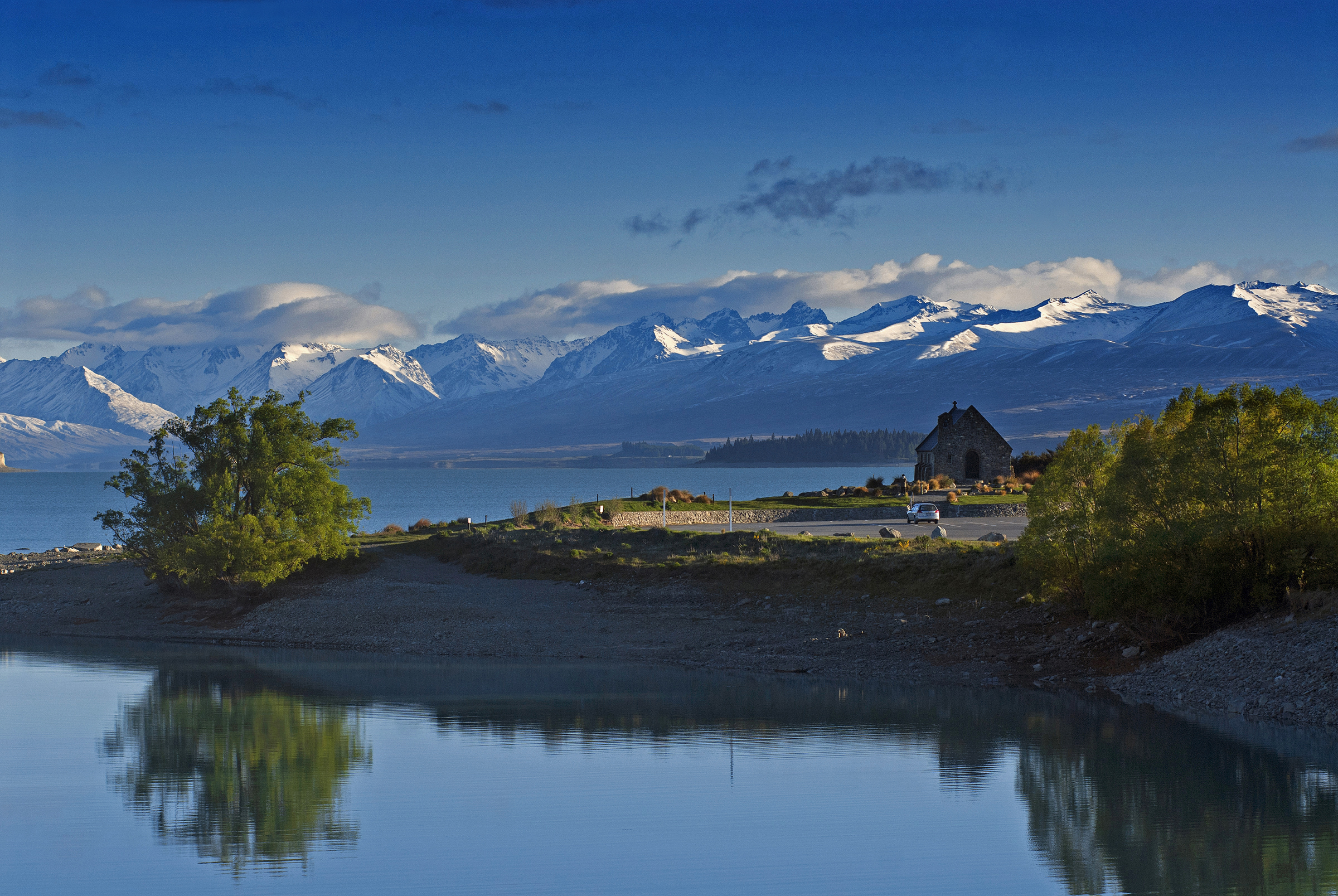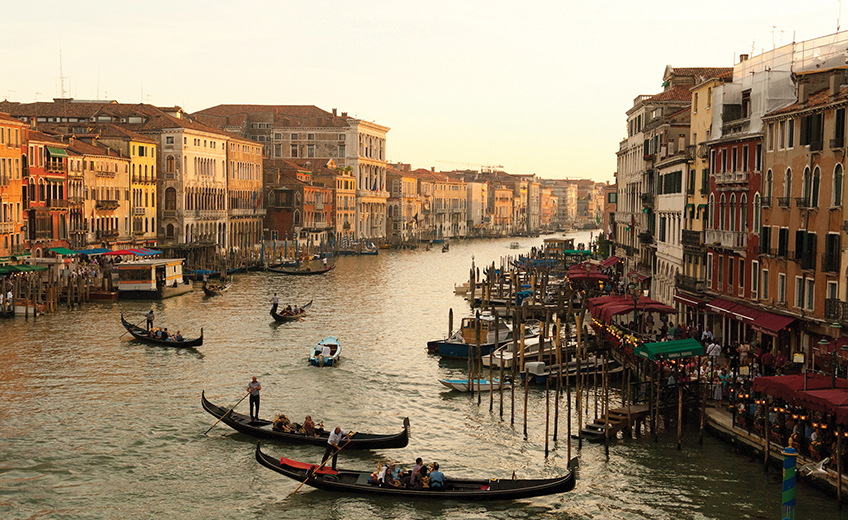He approached us slowly. A bare-chested, heavily tattooed man, chanting, grunting, hissing and waving a spear in an intimidating display. “Don’t show fear,” said Gary Parata, my Māori guide, as I volunteered to be the chief of our group. The tattooed man’s eyes widened and bulged as he neared. He grimaced and stuck out his tongue in a gesture of defiance before gently laying a fern frond on the ground before me. “It’s a token of peace,” I was told, intended to determine our intentions. “If you pick it up, it means that you accept his offer of friendship and the group will be welcomed into the village.”
Long before I heard his grunting and saw his menacing tongue, I knew what to expect. The wero is a traditional challenge at the beginning of the Māori welcome ceremony, or pōwhiri. Typically held in an open area in front of the main meeting house, or marae, it is still practiced with the utmost cultural solemnity. Our pōwhiri ended with a hongi, the gentle pressing together of the nose and forehead – the western equivalent of a handshake. It is believed that during the hongi the ha, or “breath of life”, is exchanged.
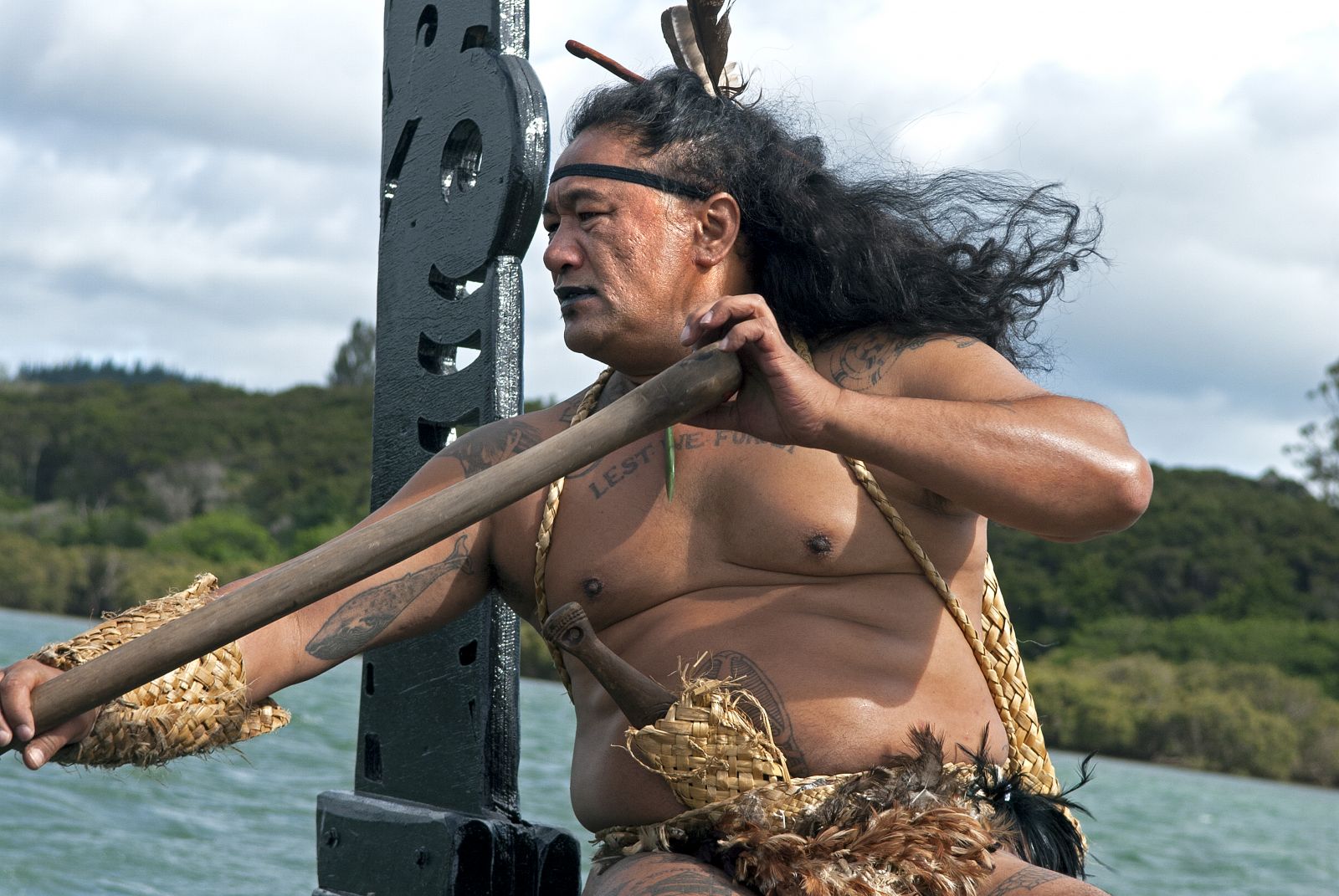
Gary is of Māori descent, from the Eastern part of the North Island of Aotearoa, the Māori word for New Zealand, meaning “Land of the Long White Cloud.” He was the guide for a small group I joined for a cultural tour of the North Island, including an overnight experience at the beach-front Piritahi Marae on Waiheke Island in the Hauraki Gulf, about 18 km from Auckland.
The “City of Sails”, Auckland is the largest city in New Zealand and the primary gateway for millions of international travellers. Once a bustling British port, this multicultural city is a 1-1/2-hour drive from wineries, rainforests, volcanoes, beautiful beaches and scores of hiking trails. Fifty or so islands in the bays frame the isthmus and are within easy reach of downtown. The largest of these, Waiheke and Great Barrier, are served by regular passenger and car-ferry services. Waiheke Island is known as “The Island of Wine”, due to its numerous vineyards.
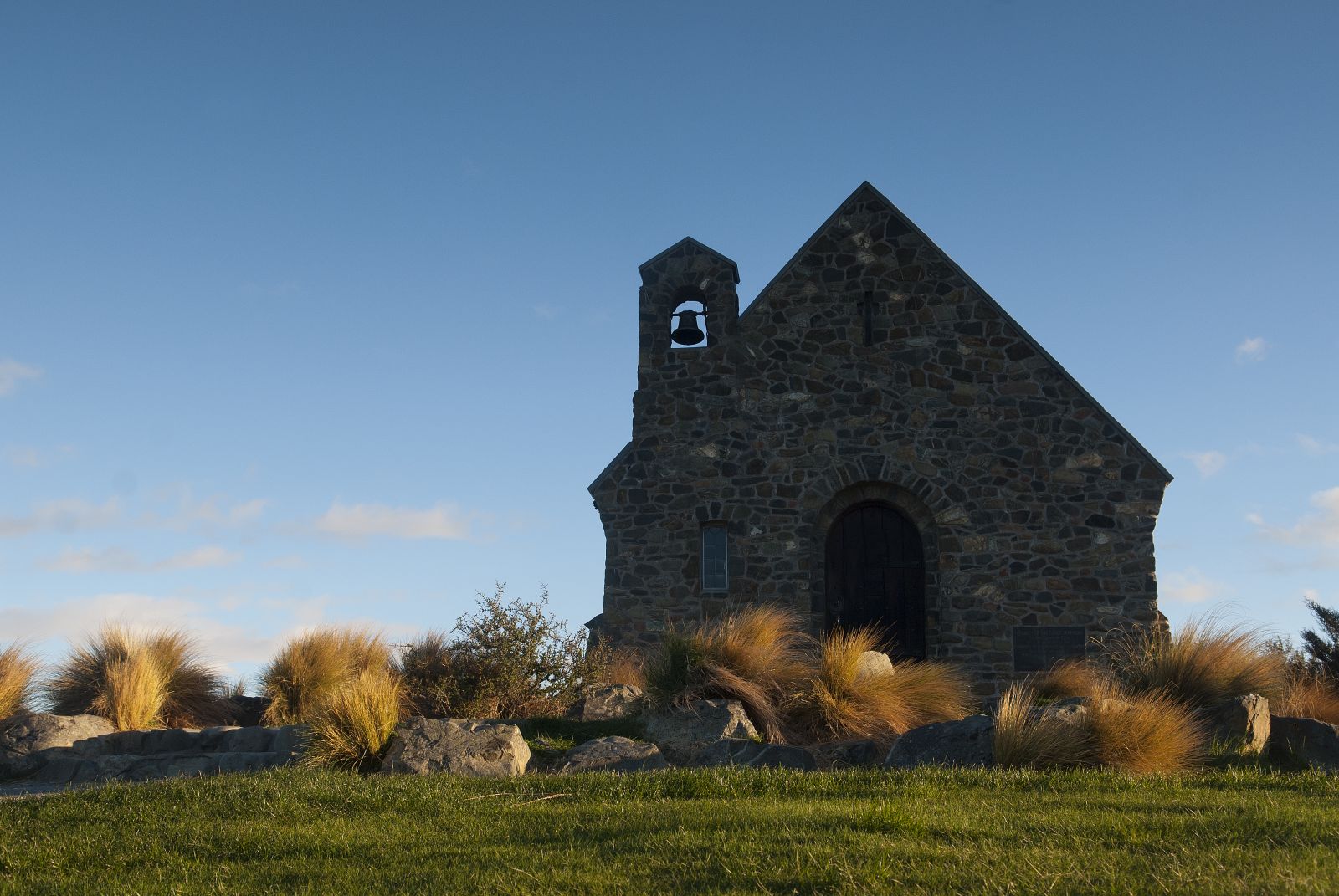
Much of Auckland is built on extinct volcanoes and the ridges of ancient lava flows. Many are now hilly parks offering impressive 360-degree views of the city. Five km south of the city centre, Mount Eden is a dormant volcano whose summit is the highest point on the Auckland isthmus. It is believed that the volcano erupted from two craters 28,000 years ago. The Māori, New Zealand’s first people, settled around Auckland in the mid-14th century. They built fortified villages on the volcanic peaks but after centuries of tribal war the area was nearly deserted when Europeans settlers began to arrive in the 1840s.
Today, Auckland’s downtown centre has an emerging reputation as a luxury destination, with vibrant shopping at Britomart and along Queen Street and world-class accommodation, entertainment and dining. Nearly a third of the 4.2 million Kiwis live in Auckland. Its Victorian and Edwardian heritage can be seen in the hip, inner-city villages of Parnell, Ponsonby and Devonport.
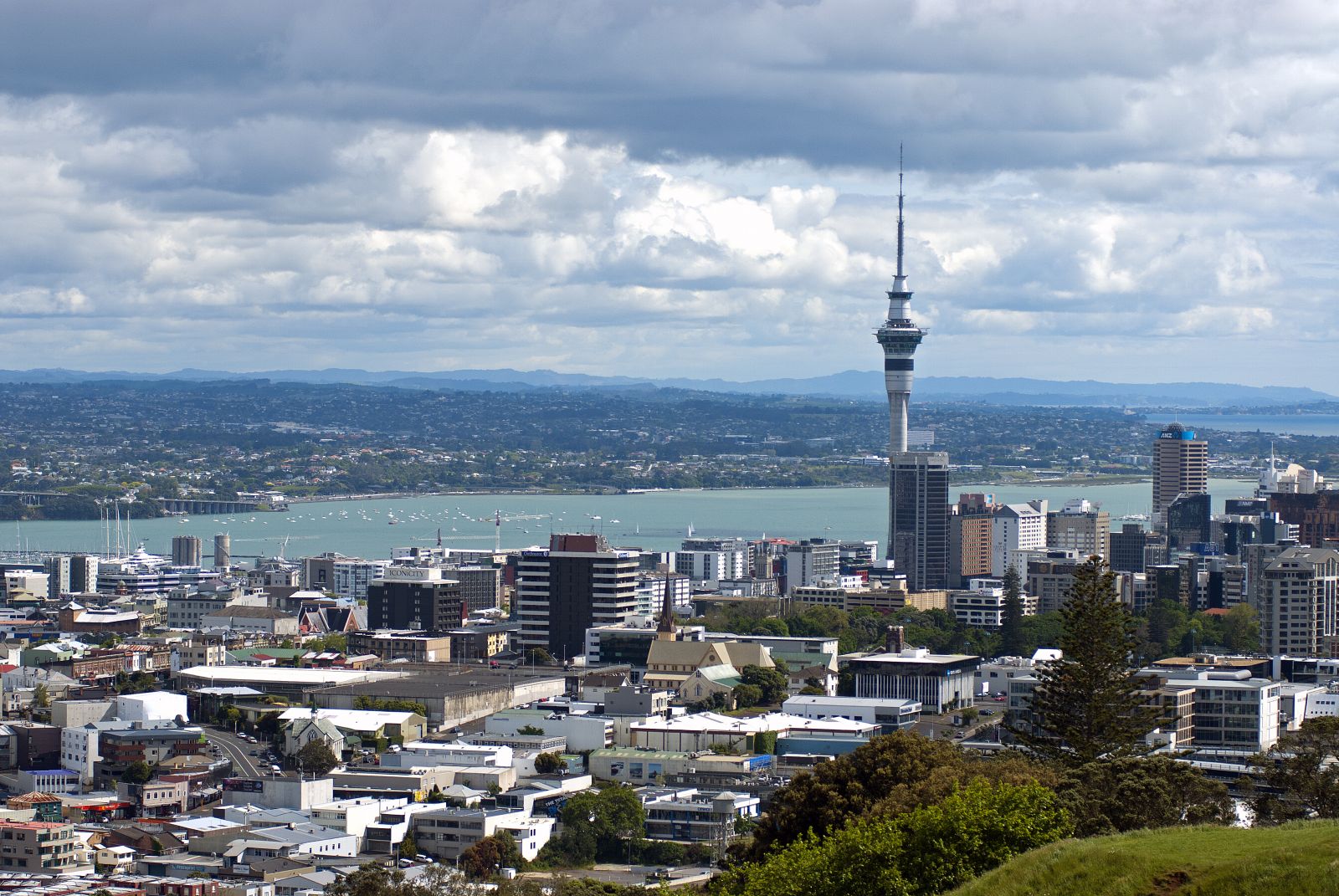
Auckland is also a great base to explore the Northland region and Bay of Islands, with many daytrips and overnight excursions. The Northland is the heart of Māori cultural tourism. The Māori, immensely proud of their heritage, have kept their identity and language alive and it is this unique culture that provides visitors to New Zealand with an experience unlike any other in the world. The renaissance in Māori tourism has opened up lesser-known parts of New Zealand to curious travellers. Like many visitors to New Zealand, I used Auckland as a gateway to explore the far reaches of one of the world’s most isolated travel destinations.
Following a short visit to the Waitangi Treaty Grounds, where New Zealand’s founding document was signed by William Hobson representing the British Empire and Māori chiefs in 1840, my small group was once again immersed in the myths and legends of Māori lore through story and song. After a short lesson on how to paddle a 15-metre waka taua (war canoe), Ngapuhi chief, Hone Mihaka took us out on the tidal estuaries of the Waitangi River. For three hours, he connected Māori stories to New Zealand’s living landscape through his own unique brand of storytelling. It was my final Māori experience on the North Island. I soon left the group and turned my attention south.
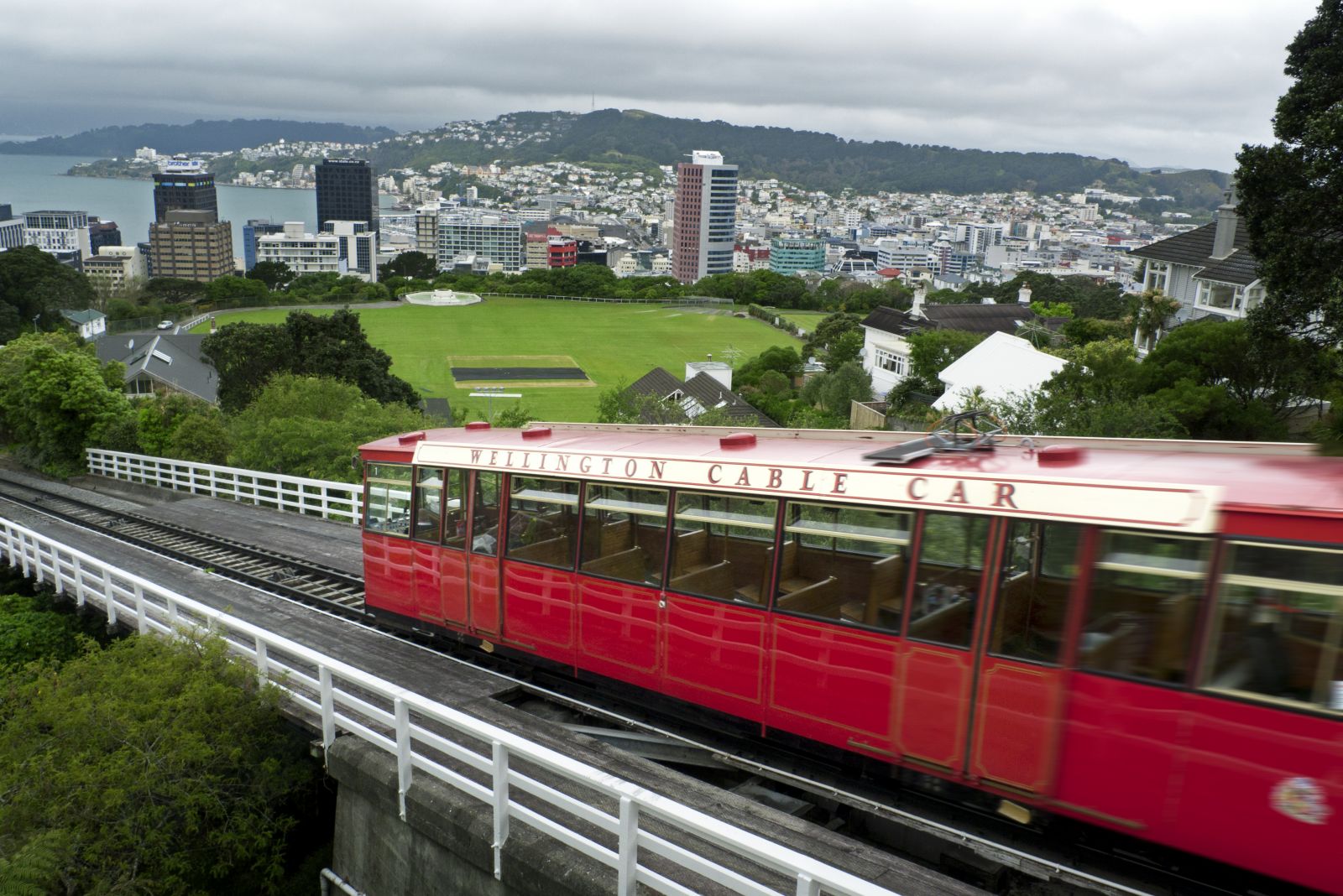
The Journey South
For travellers with limited time, making the decision to spend most – or all of it – on just one of the two main islands is an unfortunate reality. New Zealand is so diverse, that highlights will differ depending upon your interests. The North Island has a warmer climate and the two cosmopolitan harbour cities of Auckland and Wellington. It is rich in Māori culture. The Bay of Islands in the far north has beautiful secluded beaches, while active volcanoes and geothermal activity define the central area of the island.
The South Island, in contrast, has incredible mountain scenery, deep-blue lakes and glaciers and fiords on its wild and untamed southwestern coastline. It is an island of natural beauty and outdoor adventure. My journey south began with a night in Wellington at the southern tip of the North Island before boarding a short flight from Wellington to Christchurch on my way to my ultimate and long-awaited destination, Aoraki/Mount Cook National Park, via Lake Tekapo.
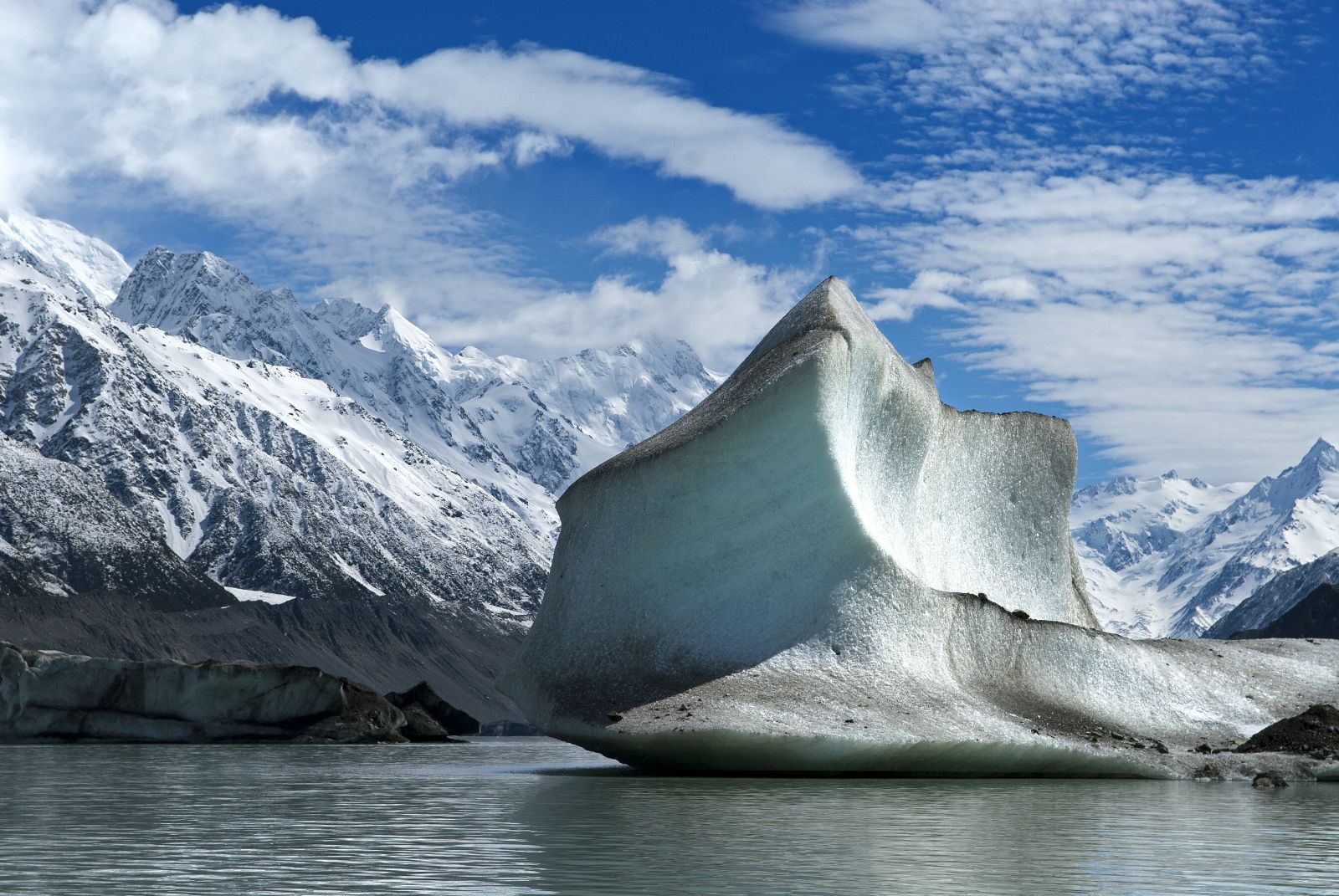
Wellington is New Zealand’s capital city and home to parliament. Nestled between Lambton Harbour and rolling green hills, New Zealand’s second-largest city has a thriving urban centre with galleries, museums, theatres, cafés, restaurants, hip bars and stylish boutiques. Wellington is also widely considered the culinary capital of New Zealand, no doubt to the chagrin of many Aucklanders. Cuba street alone boasts some of the city’s most celebrated restaurants, such as Logan Brown, Matterhorn and the Olive Cafe. Another area for super cuisine is Courtenay Place, the night-time entertainment heart of the city.
One of the city’s most famous attractions is the little red cable car that clanks up the suburban hillside from the premier shopping district at Lambton Quay to the Botanic Garden and Carter Observatory. But Wellington’s “must see” attraction is the Museum of New Zealand Te Papa Tongarewa. With six floors of exhibition space, Te Papa (“Our Place”) is one of the largest museums in the world. It is also home to the National Art Collection and a number of significant Māori treasures.
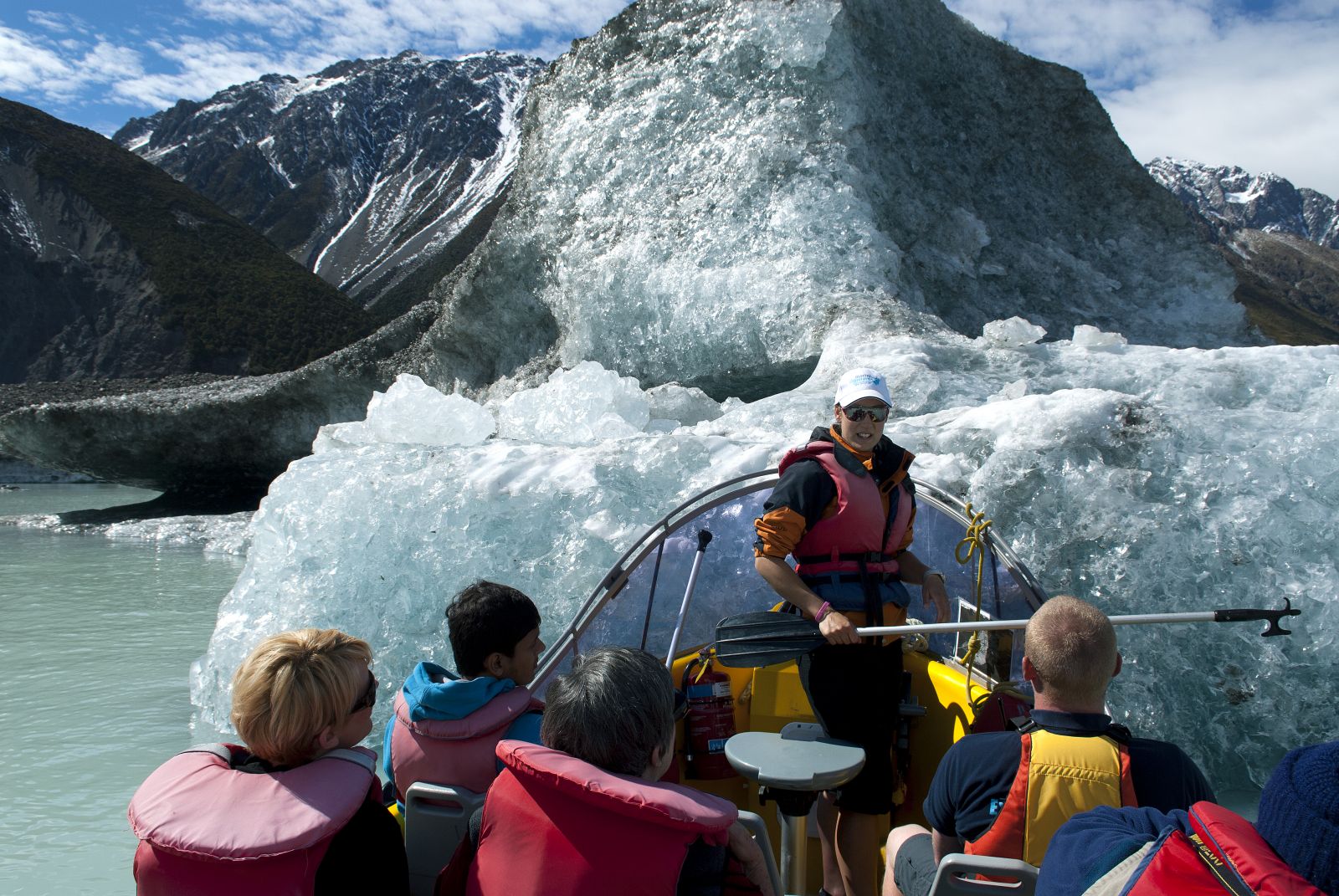
In Christchurch, I rented a car and headed southwest towards Lake Tekapo. Driving in New Zealand is a wonderful way to explore rural areas. The roads are in good condition and uncongested. I arrived at the spectacular glacier-fed lake in the late afternoon. A cluster of the Southern Alps highest peaks border the lake and provide a backdrop to some of the most beautiful views in the world. One of the most photographed attractions in New Zealand, the famous Church of Good Shepherd was built in 1935 as a memorial to the pioneers of the Mackenzie Basin. It has become one of the most popular locations for weddings in New Zealand.
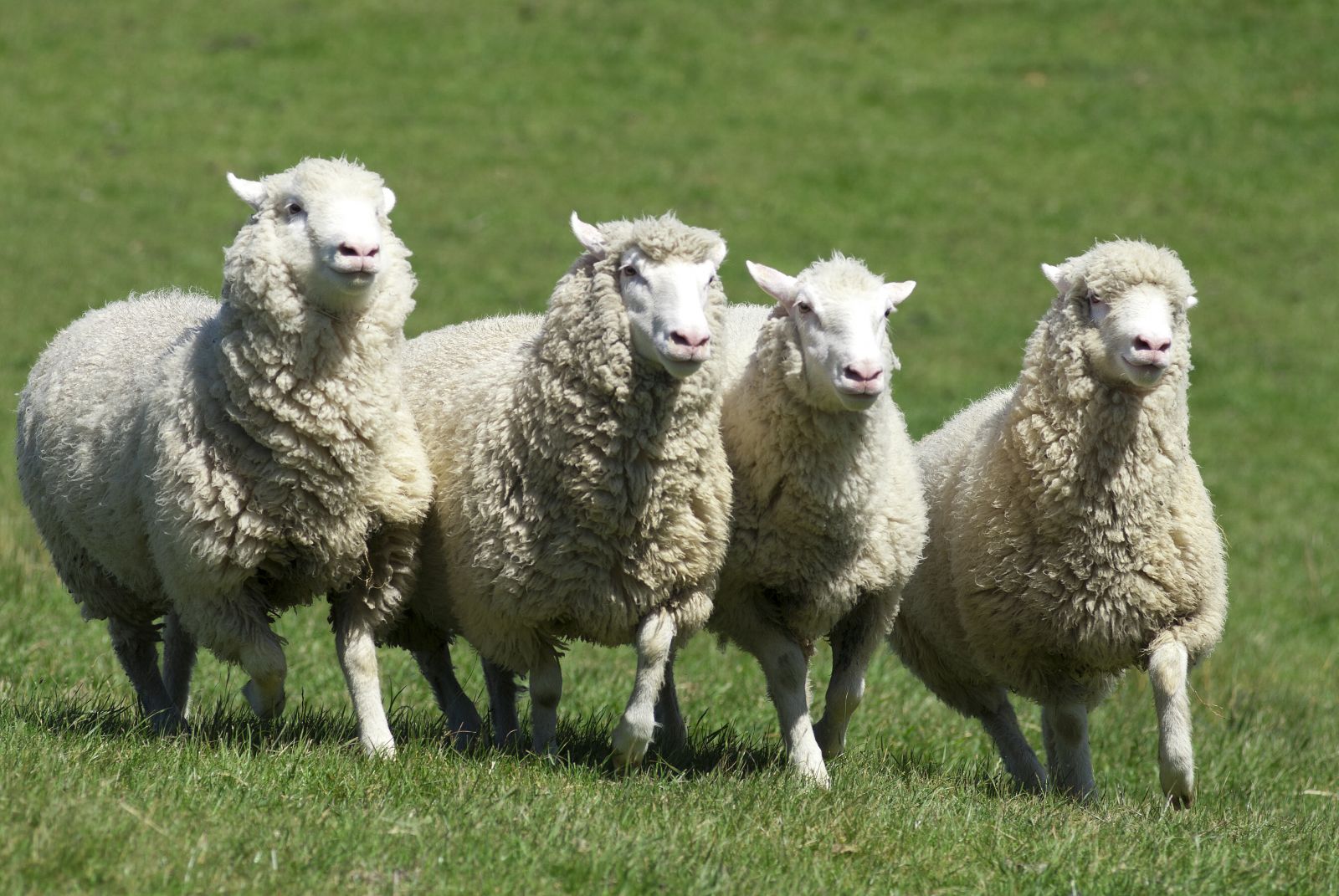
It had just started to rain as I checked into The Hermitage Hotel in New Zealand’s majestic Aoraki/Mount Cook National Park. The high peaks of the mighty Southern Alps were hidden behind a wall of dense fog. I dropped my bags in my room and wandered over to the Sir Edmund Hillary Alpine Centre located adjacent to the hotel, passing the statue of the legendary New Zealand mountaineer, who permanently looks towards New Zealand’s highest peak. I was unaware that the subject of his gaze would elude me for another two days as I used the Hermitage as my base to explore the stunning beauty and natural wonders unique to this small island in the South Pacific. When my luck finally turned, it looked as if I could reach out and touch the beautiful sunlit peak of Aoraki/Mount Cook framed against a brilliant blue sky.
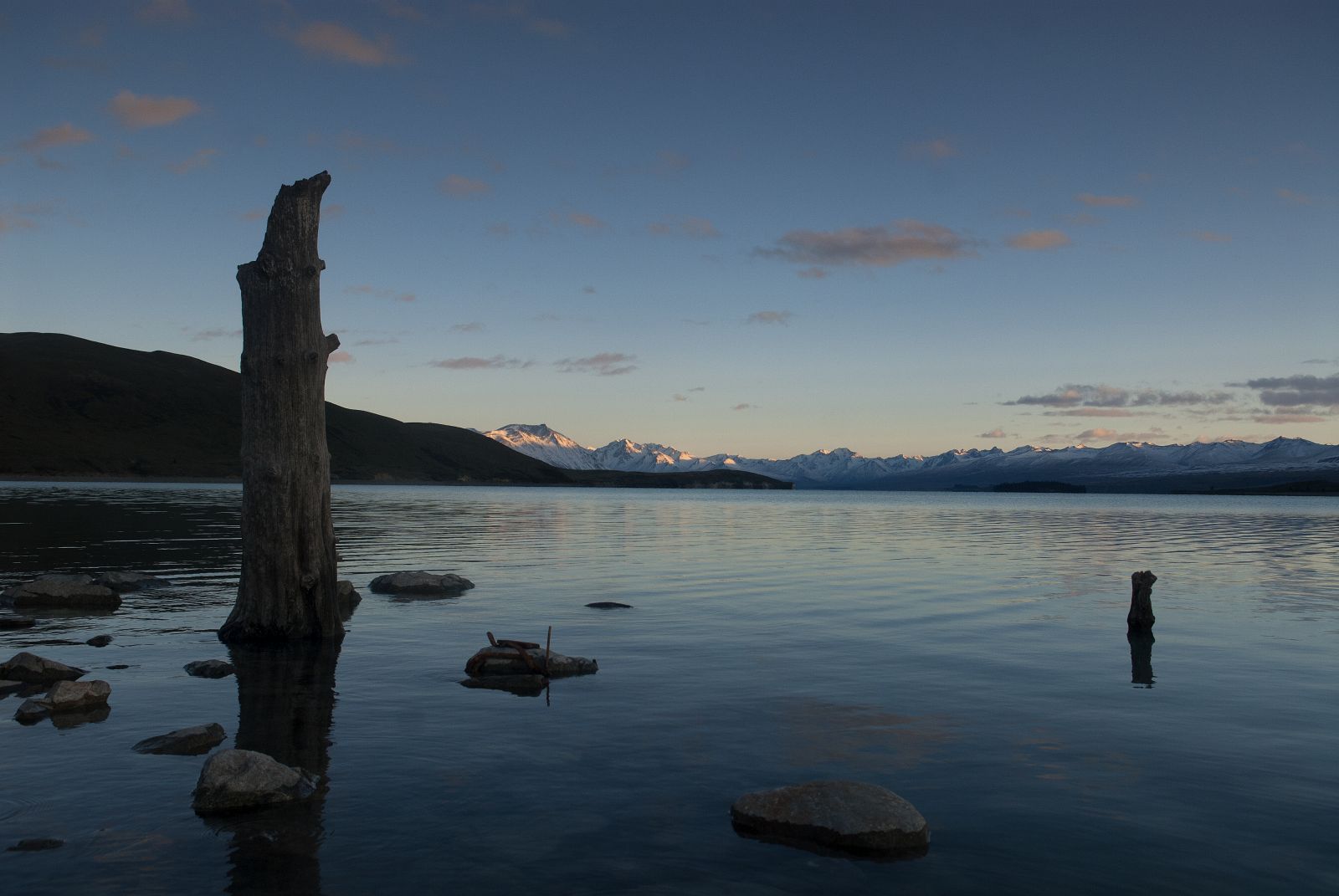
The English name of the mountain was given by Captain John Lort Stokes in 1851 to honour Captain James Cook who first landed on New Zealand in 1769 at Kaiti Beach in what is today the small town of Gisborne on the east coast of North Island. Known in pre-European times as Turanganui a Kiwa, Gisborne is also the very spot that the first Māori explores set foot on the island some 400 years earlier. It is the landing site of two important voyages and the place were two peoples began to forge the history of a new bi-cultural nation by meeting each other with the hongi, symbolising the breath of life.


